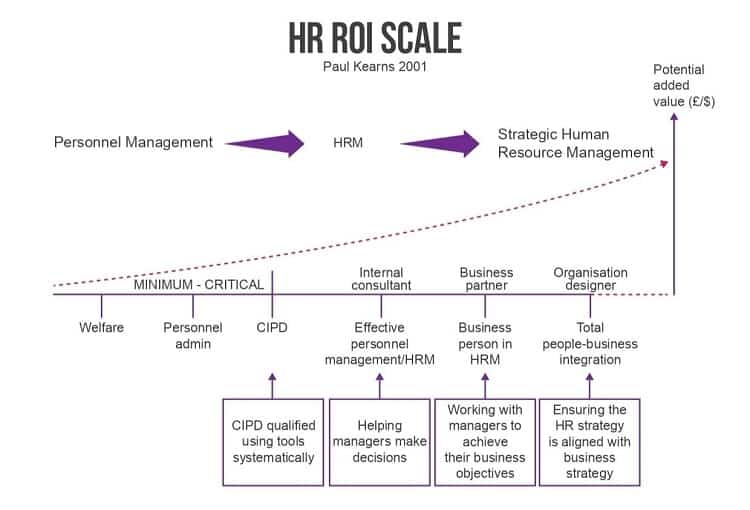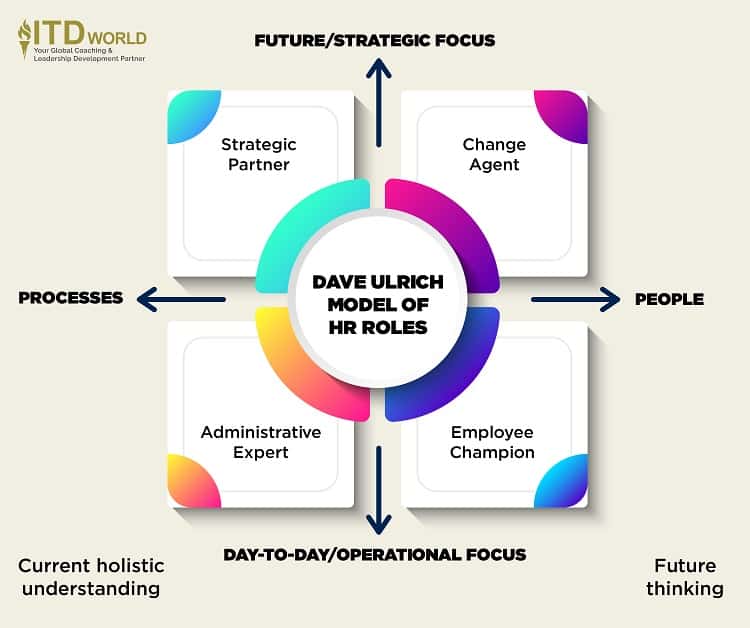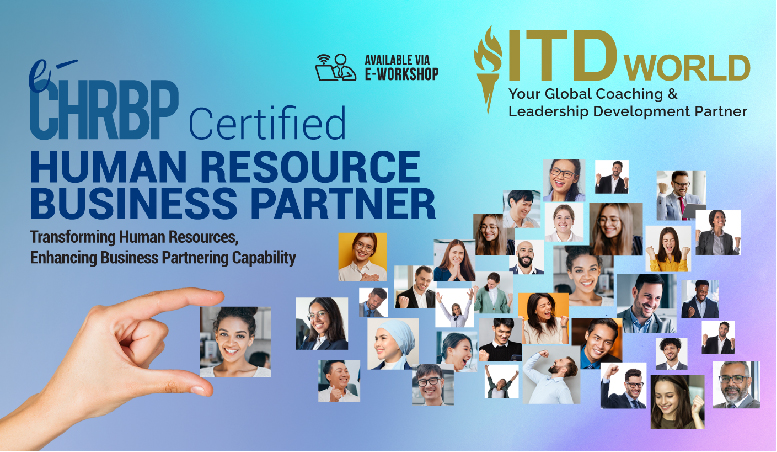Discover the HRBP model – its evolution, implementation, and transformative impact in revolutionizing HR practices for modern businesses!
The term HRBP (Human Resource Business Partner) originated from the concept of “strategic workforce planning,” which emerged in the 1990s and was further elucidated by Dave Ulrich in his work “Human Resource Champions.” This role represents a paradigm shift in the field of human resources – moving beyond traditional administrative tasks to become strategic partners in driving organizational success. But what exactly does it entail, and how does the HRBP model differ from traditional HR practices?
In the contemporary HRM landscape, the HR department is expected to play a pivotal role in strategic planning, by collaborating with business leaders to align HR initiatives with current and future business objectives. Gone are the days when their job is to merely oversee administrative functions such as payroll, benefits administration, and employee relations. Today, HR professionals are expected to add tangible value to their organizations by actively shaping workforce dynamics, overseeing recruitment efforts, designing/ implementing training programs, facilitating career development opportunities, and optimizing job placements to maximize organizational effectiveness and employee engagement.
The HRBP model embodies this shift, emphasizing the strategic partnership between HR and business units to drive sustainable growth and competitive advantage.
|
Author: Jonathan M. Pham |
Highlights
- The HRBP model fundamentally transforms the HR role from purely administrative functions (like recruitment and benefits) to a strategic partnership focused on maximizing the return on investment (ROI) in human capital. HRBPs are embedded in business operations to drive growth, profitability, and organizational performance by leveraging their expertise in human dynamics.
- The model is largely guided by Dave Ulrich’s framework, which defines four key roles for HR professionals: Strategic Partner, Change Agent, Employee Champion, and Administrative Expert. The HRBP role has continuously evolved, transitioning from a liaison function to a senior advisory role, requiring skills like business acumen, relationship building, talent development, and coaching to influence strategic decisions.
- McKinsey advocates for restructuring the HRBP model, suggesting a renaming to “Talent Value Leader” to purely focus on strategic initiatives and tangible business value. This requires operational separation from day-to-day tasks and building a team with diverse expertise (HR, business, finance) to drive high-impact talent strategies.
- Successful HRBP implementation demands a focus on outcome-oriented results aligned with business objectives, not just HR activities. HRBPs must possess both strategic and human expertise to design investments in talent and leadership, with continuous learning and skill enhancement being vital for all HR professionals involved in the framework.
What is the HRBP Model?
Basically, the HRBP (Human Resource Business Partner) model represents a fundamental shift in the role of HR professionals, focusing on maximizing the return on investment (ROI) in human capital within organizations.
As the business landscape evolves, driven by the increasing influence of digitalization and the imperative to deliver quantifiable value, traditional HR responsibilities have been undergoing a significant transformation. This shift is exemplified by the emergence of the HRBP model, which emphasizes strategic partnership and value creation.
Traditionally, HR departments have been assigned jobs such as recruitment, compensation and benefits management, and employee relations. However, the advent of automation technology has streamlined many of these administrative tasks, freeing up time for HR professionals to take on more strategic responsibilities. Consequently, many organizations now view HR as strategic business partners, who are integral to driving growth and profitability.
At its core, the HRBP model aims to embed HR functions seamlessly into all facets of strategic planning and business operations. Leveraging their expertise in human dynamics, HR professionals are uniquely positioned to optimize workforce capabilities by identifying and leveraging employees’ strengths – thereby enhancing organizational performance and outcomes. This strategic alignment between HR and business objectives underscores the pivotal role of HRBPs in driving organizational success.

Development of the HRBP Model
Inception
In 2003, Ms. Vaso Perimenis, Ekstein Consulting Services’s Human Resources Director, had a firsthand encounter with the nascent HRBP model. At the time, she was employed by a medical organization in South Florida – which was undergoing substantial expansion.
Recognizing the inadequacy of traditional HR structures in supporting organizational growth, the company’s board of directors initiated the establishment of a novel department dubbed “HR Site Management.” This department was conceived to serve as a liaison between local leadership and the central HR function, tasked with fostering employee relations and facilitating seamless communication between the company’s various branches and localities.
Since its inception, the HRBP model has undergone a continuous evolution, shaped by diverse perspectives and organizational contexts. While there are no rigid guidelines dictating the exact functions of HRBP professionals, certain core principles have emerged to guide their roles and responsibilities.
Dave Ulrich, in his seminal work “HR Champions,” delineated four primary roles of HR professionals within the HRBP framework:
- Strategic partner.
- Change agent.
- Human resource development (Employee champion).
- Administrative expert.
However, it’s essential to recognize that this framework does not encapsulate the entirety of the HRBP model; rather, it serves as a foundation for HR professionals to transition towards a consultancy approach – emphasizing problem-solving and strategic alignment over prescriptive directives. This evolution underscores the paradigm shift towards a more collaborative and solution-oriented HR function within organizations.

Dave Ulrich’s Human Resource Management Model
Growth
In 2009, Ms. Vaso had the chance to be exposed to the HRBP framework again, this time in a healthcare organization. Here, the HRBP role was more defined and supported by dedicated personnel from the HR department. Ms. Vaso’s responsibilities involved managing the intricate relationship between the business and its employees, overseeing recruitment for management positions, and serving as a pivotal link between managers and directors.
Initially, with a relatively lean HR infrastructure, the framework proved effective. However, as the organization expanded, challenges began to surface. Despite numerous consultations with the corporate relations center, issues stemming from inconsistent alignment between professional teams and HRBP functions persisted.
Recognizing the need for adaptation in response to changing environmental dynamics, the HR department underwent a strategic reassessment in 2012. This led to the establishment of a specialized department tasked with management-level recruitment, while HRBP retained its focus on nurturing employee relationships. To address previous discrepancies, regular review meetings between HRBP professionals and the employee relations team were instituted. Furthermore, each HRBP was paired with an employee relations specialist to ensure comprehensive consultation and support.
Embracing the ethos of continuous improvement, the HR team delved into performance consulting methodologies, enabling them to function as strategic partners in addressing business challenges through targeted tactics and sub-strategies. Key performance consulting tools adopted by the HR team included:
- Formal project contracts that delineate specific goals, objectives, and metrics.
- Quarterly reporting of results to HR colleagues and key business stakeholders.
- Ongoing professional development initiatives.
- Monthly reporting to business leaders to foster transparency and accountability.
- Rigorous data analysis to inform decision-making and optimize resource allocation.
Transformation
In 2015, a significant transformation unfolded within the HRBP team as a result of downsizing, which necessitated a reduction in staffing by half. This shift precipitated a comprehensive review of job expectations and responsibilities, particularly regarding employee retention, transfer, and termination.
With the employee relations department assuming a more focused role, HRBP professionals ceased attending employee grievance hearings. However, the most notable change in the application of the HRBP model was the recalibration of roles – transitioning from supporting middle management to advising directors, deputy directors, and higher-level executives.
By intensifying their support at the highest echelons of leadership, HRBP professionals gained greater influence over strategic decisions and initiatives. This evolution demanded that HR business partners demonstrate the following key qualities:
- Building relationships: Successful HRBPs excel in cultivating positive relationships throughout the organization, fostering a collaborative spirit, and enhancing internal cohesion.
- Focus on initiatives & solutions: Departing from the traditional administrative focus, HRBPs now pivot towards translating strategic directives into actionable initiatives, thereby driving organizational progress and transformation.
- Talent development specialist: With talent management becoming a cornerstone of organizational development, HRBPs must adeptly identify, nurture, and sustain talent pools to propel the organization forward. Leaders now need to perceive HRBPs as catalysts for value creation, anchored in robust human resource foundations.
- Business acumen: HRBPs are expected to demonstrate a nuanced understanding of the broader business landscape, so as to enact positive change within the organization. This involves familiarity with financial reports, market dynamics, customer demographics, and industry challenges – which are all crucial to facilitating informed decision-making and strategic alignment.
- Coaching: As they become trusted business advisors, HRBPs must also assume the role of coaches, who are expected to guide organizational leaders toward innovative solutions and developmental pathways. This necessitates a deep understanding of the business, adept reputation management, and a collaborative mindset conducive to problem-solving.
Ms. Vaso’s professional journey encapsulates the multi-faceted evolution of the HRBP model through 3 formal stages, augmented by unofficial adaptations aligned with organizational goals. Her experiences underscore the inadequacy of a singular definition of HRBP; in other words, organizations need to continuously assess the efficacy of HRBP functions through:
- Implementing performance management methodologies anchored in standardized metrics and business outcomes.
- Regularly reviewing and updating the HRBP competency model to ensure alignment with evolving business imperatives.
- Soliciting feedback from key stakeholders regarding HRBP capabilities and their impact on driving organizational objectives.
As HR transitions from a predominantly administrative function to a strategic value-creator, businesses must heed several imperatives before embarking on transformation themselves:
- Clarify organizational success metrics and objectives.
- Identify requisite capabilities and competencies to support strategic objectives.
- Foster a culture of continuous learning and development to bridge skill and competency gaps within teams.
To ensure alignment between HRBP capabilities and organizational objectives, the HR department’s vision, strategies, and goals must harmonize with organizational activities. This alignment enables businesses to pinpoint specific competencies essential for driving organizational success effectively.

Read more: HR Competency Model Analysis – Elevating HR Practices for Success
McKinsey’s Research on the HRBP Model
Years ago, McKinsey conducted a survey among CEOs to gauge the importance of talent development strategies within their organizations. The findings revealed a lack of confidence in HR’s ability to strategically manage and nurture talent effectively. Recent reruns of this survey have shown little improvement, underscoring the persistent challenge facing HR in talent management and value promotion.
At the heart of this challenge lies the role of the Human Resources Business Partner (HRBP). Despite decades of efforts to integrate HRBPs into strategic business activities, many organizations continue to struggle with finding skilled HRBPs.
To leverage the full potential of this role, McKinsey advocates for a fundamental restructuring of the HRBP model, even suggesting a renaming to “Talent Value Leader” along with a redefined set of responsibilities. Accordingly, key features of this reimagined HR model include:
- Operational separation: McKinsey proposes separating operational tasks from Talent Value Leaders, transforming their role into one purely focused on strategic initiatives. This comes from the fact that many HRBPs often find themselves entangled in day-to-day operations and transactional tasks, detracting from their strategic focus.
- Empowered strategic influence: Talent Value Leaders should be empowered to drive talent-related initiatives that generate tangible business value. This shift requires elevating HRBPs from mere administrators to strategic influencers capable of shaping organizational outcomes through talent development strategies.
- Diverse expertise: Building a team of Talent Value Leaders with diverse backgrounds in HR, business, and finance enables organizations to leverage a broad spectrum of expertise in identifying and implementing high-impact talent development strategies. This multidisciplinary approach ensures a holistic perspective on talent management, transcending traditional HR-centric views.
Several companies have already begun adopting elements of this reimagined HR model. For instance, a global beverage corporation has appointed those with backgrounds in engineering, technology, or process-oriented fields to HR roles – highlighting the growing importance of data-driven insights in shaping HR strategies.
Similarly, some companies have been facilitating a seamless transition between line management and HR positions to foster cross-functional leadership development. For instance, at an automobile corporation, the CEO transitioned from the role of Vice President of Human Resources to a leadership position within the global product development team, underscoring the value of diversified leadership experiences.
However, transitioning to the Talent Value Leader model requires concerted efforts to reshape the mindset and capabilities of HR professionals and business leaders alike. Despite the challenges, the potential rewards are substantial if HRBPs can effectively harness the value of talent – the most invaluable asset of any organization.
(More information about McKinsey’s research can be found here)

A Turning Point in HRM’s Evolution: The Emergence of Dave Ulrich’s HRBP Model
Dave Ulrich’s HRBP model represents a pivotal turning point in the evolution of Human Resource Management (HRM), marking a shift towards a more strategic and value-driven approach. This model encompasses thirteen key elements that delineate the progression from traditional HR practices to the contemporary HRBP framework:
-
Value contribution
HR’s role in organizations has evolved from performance-focused to functional and strategic, emphasizing its contribution to organizational success.
-
Human resources context
Their impact now extends beyond traditional administrative functions, necessitating an understanding of contextual factors such as societal trends (STEPED), VUCA (Volatility, Uncertainty, Complexity, Ambiguity), and the individualization trend.
-
Stakeholders
HR professionals are expected to meet the needs of a diverse range of stakeholders, including internal (employees, line managers, organizations) and external ones (customers, investors, communities).
Read more: Stakeholder Management – A Leader’s Engagement Playbook
-
Employee impact
They are now tasked with enhancing employee productivity and experience through capacity, commitment, and contribution.
-
Organizational impact
Aside, their role also involves making contribution to the organization’s competitive advantage by shaping morphology, alignment/system, and capacity.
-
Leadership capacity
In addition, they also need to play a part in developing leadership skills across the organization, transitioning from individual to collective leadership – and from Leadership Rules 1.0 to 2.0.
Read more: Leadership Potential – How to Spot & Cultivate Future Leaders
-
HR strategy
A comprehensive HR strategy answers questions about HR’s identity, offerings, and purpose in creating value.
-
HR department restructure
Restructuring should align with business strategies, incorporating principles such as separating essential/transactional work from strategic work.
-
Code of conduct
HR practices should be integrated, consistent, creative, and simple, adhering to criteria that promote holistic solutions and alignment with organizational strategies.
-
HR capacity
HR professionals are expected to possess essential skills, which are subject to continuous evolution – so as to meet changing business requirements and expectations.
-
Digitalization
Given that we are living in a digital era, it’s no wonder why HR has to learn how to leverage technology to build digital business strategies and improve HR functions.
Read more: Human Leadership in a Digital World – Skills & Strategies
-
Data analysis
Another crucial requirement for HR is to utilize data analysis to inform decision-making across the Balanced Scorecard, detailed information, interventions, and impact.
-
Working style
HR professionals need to collaborate internally and externally, guided by principles of shared purpose, respect, administration, adoption, empathy, shared experiences, and collaborative development.

7 Lessons Learned From the HRBP Model
After extensive observation and research, Dave Ulrich has distilled several key lessons from the Human Resource Business Partner (HRBP) model, highlighting its application in the current business landscape:
- Holistic value creation
The HRBP model transcends the confines of the HR department, necessitating every department to contribute to revenue and profit growth. This entails streamlining and optimizing transactional and administrative tasks across various functions.
- Outcome-oriented focus
Rather than merely tracking HR activities, the HRBP model emphasizes measuring specific measurable results aligned with business objectives. This progression involves transitioning from administrative efficiency to strategic HR, ultimately driving value creation for customers and investors.
- Collective engagement
Every HR position is intricately involved in the framework, with HRBPs spearheading initiatives across the organization, representing stakeholders, and fostering synergy between units.
- Business acumen
HRBPs are expected to possess a profound understanding of the business landscape and operations, enabling them to offer unique proposals that confer competitive advantages.
- Strategic & human expertise
HRBPs straddle the roles of strategist and human expert, designing and directing investments in talent, leadership, and organizational capabilities, while also leveraging qualitative insights to predict future trends.
The successful implementation of the framework hinges on nurturing and developing HR professionals, with the 20-60-20 rule delineating successful HRBPs, those in the learning curve, and those who may not align with the model.
- Continuous skill enhancement
Embracing the model means that HR professionals must continually acquire new knowledge and skills tailored to their career path, so as to enhance individual performance, stakeholder benefits, and organizational success.
Read more: 10 L&D Trends to Help Your Workforce Thrive

Dave Ulrich explained the role of HRBP in the current digital age
Learn How to Apply the HRBP Model with ITD World’s CHRBP Program
In today’s dynamic business landscape, HR is no longer just about processing paperwork. Businesses are in need of professionals who can think strategically and become true partners in achieving organizational goals.
At ITD World, we understand the evolving role of HR. That’s why we’ve designed our Certified Human Resource Business Partner (CHRBP) Program to equip you with the knowledge and skills to excel as an HRBP. In this program, you will learn how to:
- Become a trusted advisor: We’ll help you develop the competencies needed to build strong relationships with business leaders, understand their challenges, and provide strategic HR solutions.
- Champion change: The HRBP role is all about driving positive change within the organization. Our program equips you with the skills to lead and manage change initiatives effectively.
- Leverage data and analytics: Make data-driven decisions! We’ll show you how to use HR metrics and analytics to measure the impact of your HR programs and demonstrate the value of HR to the business.
- Shape the future of talent management: Learn how to develop and implement talent management strategies that attract, retain, and develop top talent.
- Design agile HR capabilities: In today’s fast-paced world, HR needs to be adaptable. Our program will teach you how to design and deliver HR solutions that are flexible and responsive to changing business needs.
The CHRBP program is more than just a course. It’s a transformation:
- Experience-based learning: Our program goes beyond theory. You’ll gain practical experience through case studies, simulations, and real-world scenarios.
- Expert faculty: You’ll learn from our seasoned HRD expert and industry leader – who has had extensive experience in the role & various related positions.
- Global recognition: Upon successful completion, you’ll earn the prestigious Certified CHRBP designation, a globally recognized symbol of your expertise in HR Business Partnering.
Ready to take your HR career to the next level? Contact ITD World today to learn more about the CHRBP program and how you can enroll.
Other resources you might be interested in:
- Talent Transformation: Unleashing the Workforce’s Potential
- Employee Engagement in the Digital Age: Strategies for Powering Up Your People
- Future Ready Organization: 11 Tips to Building One
- Business Process Transformation: Strategies for Success
- Leading Through Uncertainty: How to Navigate Turbulent Times


